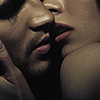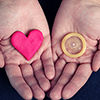It’s that time of the year again; rainbow-covered items have begun popping up around town, be they banners on street-posts or items in stores that have a rainbow-themed pattern with ‘PRIDE’ plastered somewhere on it. It feels like it’s been an annual thing for some years now, or as far as I can recall since I went to that giant ‘pride parade’ downtown what might’ve been a good ten years ago by now.
Also the time when I often hear fellow workmates or friends scoff at the idea of it being ‘gay pride’ month. Turning down my suggestions that we dip downtown and check out the parade because, ‘why is there no straight pride parade?’ Or if they’re typically a good bit older, saying they’re not interested in checking out ‘gay propaganda’.
Now, I never really bothered to look into the answers to why there is so much media about LGBTQ+ pride. How come we never read or hear about the same things having gone on in our parents or grandparents time, save for Woodstock? I mean, there’s typically a catalyst of some sort for every movement that really kicks it into motion so colour me surprised when I read up on the history behind gay pride month.

Gay Americans living in the 1950s and 1960s faced an anti-gay legal system. Homosexual groups in the U.S. at that time sought to show that gay people could be assimilated into society, favouring non-confrontational education for homosexuals and heterosexuals alike.
There were very few establishments who welcomed gay people. The ones that did were usually bars, namely The Stonewall Inn. The Stonewall Inn was run by the Mafia, and was known to be popular among the poorest and most marginalized people in the gay community: butch lesbians, effeminate young men, drag queens, male prostitutes, and transgender people.. In the fall of 1959, the New York police force began closing down the city's gay bars, which had numbered almost two dozen in Manhattan at the beginning of the year.
The election of John Lindsay as mayor in 1965 signaled a major shift in NYC politics, and a new attitude toward sexual behaviors began changing the social atmosphere of New York.
On April 21, 1966, it was declared that it was illegal for homosexuals to congregate and be served alcoholic beverages in bars.
An example of when these laws had been upheld is when Gloria's, a bar that had been closed for such violations, fought the case in court and lost. Prior to this change in the law, the business of running a gay/lesbian bar would often involve paying bribes to the police and Mafia.
Regardless, most gay bars were quickly closed and new ones lasted only a short time. Despite police raids on gay bars being almost routine throughout the 1960s, officers quickly lost control of the situation at the Stonewall Inn on June 28, 1969.

And so it began…
In the early hours of the morning, five uniformed police officers joined forces with four undercover police, who were already stationed inside the bar.
Because the patrol wagons responsible for transporting the arrested patrons and the alcohol from the bar took longer than expected, the raid did not go as planned. This little bit of extra time was all that was needed for a crowd of released patrons and by-standers to grow outside of the Inn. The crowd swelled as the night went on. So much so that the police officers eventually became so afraid of the crowd that they refused to leave the bar for up to 45 minutes!
The straw that broke the camel’s back in what had been building up for years was when a woman in handcuffs was escorted from the door of the bar to the waiting police wagon several times. She managed to get out of the wagon and proceeded to repeatedly fight with four of the police, swearing and shouting. Bystanders recalled that the woman sparked the crowd to fight when she looked at bystanders and shouted,
"Why don't you guys do something?!"

After an officer picked her up and heaved her into the back of the wagon, the crowd became explosively violent.
As riots typically go, the more the police force tried to restrain some of the crowd, knowing a few people down, the more riled up bystanders became. The riots would go on to escalate to the point where the Tactical Police Force (TPF) of the New York City Police Department were called in to help free the police officers trapped inside the Stonewall.
Tensions between New York City police and gay residents of Greenwich Village erupted into more protests the next evening, and again several nights later. Within weeks, Village residents quickly organized into activist groups to concentrate efforts on establishing places for gay men and lesbians to be open about their sexual orientation without fear of being arrested.
After the Stonewall riots had quieted down, gay men and lesbians in New York City faced gender, race, class, and generational obstacles to finally being able to become a more cohesive community. Within six months, two gay activist organizations were formed in New York. A year after the uprising, to mark the anniversary on June 28, 1970, the first gay pride marches took place in New York, Los Angeles, and San Francisco. The anniversary of the riots was also commemorated in Chicago and similar marches were organized in other cities. Within a few years, gay rights organizations were founded across the U.S. and the world.

CUE LGBT PRIDE MONTH BEING CELEBRATED ON A GLOBAL LEVEL
LGBT Pride Month occurs in the United States to commemorate the Stonewall riots, which occurred at the end of June 1969. As a result, many pride events are held during this month to recognize the impact LGBT people have had in the world. Beginning in 2012, Google even displayed some LGBT-related search results with different rainbow-colored patterns each year during June. In 2017, Google also included rainbow coloured streets on Google Maps to display Gay Pride marches occurring across the world.

So, back to the question- why is there no month or festivities celebrating being straight?
Because Congress has yet to pass a law requiring people to hide the fact they are straight. The streets are not filled with children who have been kicked out of their homes for being straight. It’s not the norm to see stories in the news in which someone has been beaten, tied to a fence and left to die or shot in the face at point blank range because they were straight.
Gay pride month may seem like a band-aid solution to raising more awareness for the LGBTQ+ community to many, but remember; it was the norm to be arrested for nothing more than belonging to such communities less than a century ago!
As a result, it seems pretty fitting that every liberty be celebrated.

EDIT- the title was intended to be nothing more than click-bait. I was aware that there's no need to raise awareness for an orientation/gender-identity that is held by the majority. However, my curiosity definitely got the best of me when I heard many peers/coworkers asking the question in all seriousness. Hence, I took it upon myself to look into the history behind 'gay pride month' and learn more about what actual events were involved in how it came to be.
 Sexual Relationships
Sexual Relationships  Sexual Health
Sexual Health 





















Most Helpful Girl